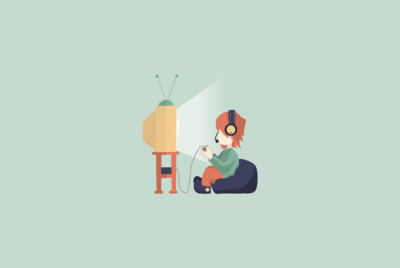How Do You Test and Iterate on Game Design?
In the ever-evolving world of game design, testing and iterating are crucial processes that help developers create engaging and successful games. “How Do You Test and Iterate on Game Design?” delves into the strategies and methods we use to refine our games through continuous feedback and adjustments. Together, we examine the importance of playtesting with diverse audiences, analyzing feedback in detail, and making iterative changes to improve the overall gaming experience. This journey through the iterative process showcases how collaboration and adaptability are key to crafting games that both captivate and entertain players. How do we test and iterate on game design? It’s a fundamental question that every game designer grapples with at one point or another. Crafting engaging, fun, and captivating game experiences requires more than just a set of creative ideas. It involves rigorous testing, iteration, and feedback loops to ensure that our game delivers on its promise.

Understanding the Importance of Testing
Testing is the linchpin of game design. Without it, we are essentially flying blind, relying solely on our instincts, which might not always align with what our players enjoy. Testing allows us to validate our assumptions, discover bugs, and understand player behavior. It enables us to create a polished product that gamers will love.
The Role of Prototypes
Prototyping plays a crucial role in the initial stages of game design. Building a prototype allows us to test our core mechanics quickly and efficiently. It doesn’t have to be pretty; it just needs to be functional.
Types of Prototypes
| Prototype Type | Description | Purpose |
|---|---|---|
| Paper Prototype | Uses drawings or cut-outs on paper to represent the game. | To test basic gameplay mechanics and flow. |
| Digital Prototype | An early digital version created with minimal features. | To test game mechanics, user interface, and controls. |
| Vertical Slice | A polished version of a small part of the game. | To showcase the full potential of the game. |
By creating prototypes, we can quickly iterate on our ideas and identify what works and what doesn’t without investing too much time or resources.
The Iterative Design Process
Iteration is the process of refining and improving our game based on feedback and testing. Instead of aiming for perfection on the first try, we embrace a cycle of continuous improvement. This approach can be broken down into several key steps.
Step 1: Define and Hypothesize
Before we can test anything, we need to set clear goals and hypotheses. What are we trying to achieve with our game? What assumptions are we making about player behavior? Defining these elements provides a roadmap for our testing efforts.
Step 2: Build and Implement
Armed with our hypotheses, we move on to building our prototype or game feature. This stage involves coding, designing, and creating the assets needed to bring our ideas to life. At this point, it’s important to remember that our primary goal is to test and learn, not to create a perfect product.
Step 3: Test and Collect Data
Once our prototype or feature is ready, we move on to testing. This can take many forms, ranging from internal testing with team members to external playtesting with our target audience. During this phase, we collect qualitative and quantitative data that will inform our next steps.
Step 4: Analyze and Iterate
After gathering data from our testing, we analyze the results to determine what worked, what didn’t, and why. This analysis then informs the next iteration of our game. By making data-driven decisions, we can continuously improve our game until it reaches its full potential.
Methods of Playtesting
Playtesting is a critical component of the testing and iteration process. It provides us with invaluable insights into how real players interact with our game. There are several methods we can use to conduct playtests.
Internal Playtesting
Internal playtesting involves members of our development team playing the game. This allows us to quickly identify and fix any major issues before moving on to larger-scale testing.
External Playtesting
External playtesting brings in players from outside our development team. This can provide a fresh perspective and help us identify issues we might have overlooked. External playtesting can include friends and family, beta testers, or even strangers recruited through online forums.
Remote Playtesting
In remote playtesting, players test the game from their own locations. This approach is particularly useful for gathering diverse feedback from a wide range of players.
Usability Testing
Usability testing focuses on how easily players can navigate our game. It helps identify issues with user interface, controls, and overall player experience.
Gathering and Analyzing Feedback
Collecting feedback is only half the battle. We also need to analyze it effectively to make informed decisions about our game design.
Types of Feedback
| Feedback Type | Description |
|---|---|
| Qualitative | Descriptive feedback about player experience. |
| Quantitative | Numerical data, such as scores or time taken. |
| Direct | Comments and suggestions from players. |
| Indirect | Observations of player behavior. |
Tools for Gathering Feedback
Using the right tools can make the feedback collection process much more efficient. Here are some commonly used tools:
| Tool | Description |
|---|---|
| Surveys | Gather direct feedback through questions. |
| Analytics | Collect quantitative data on player behavior. |
| Screen Recording | Observe how players interact with the game in real-time. |
| Observation Notes | Take notes while watching players during face-to-face tests. |
Analyzing Feedback
When analyzing feedback, it’s essential to look for patterns and trends rather than getting lost in individual comments. By identifying common issues, we can prioritize what needs to be addressed in our next iteration.

Balancing Game Systems
One of the most challenging aspects of game design is balancing the various systems within our game. Whether it’s adjusting difficulty, tweaking character abilities, or refining the economy, balance is crucial for creating a satisfying player experience.
Setting Initial Parameters
When designing our game systems, we start by setting initial parameters based on our design goals. These parameters serve as a starting point that we adjust through testing and iteration.
Testing for Balance
To test for balance, we need to look at various aspects of our game:
- Difficulty: Is the game too easy or too hard?
- Economy: Are resources too scarce or too abundant?
- Progression: Is the pacing of the game too slow or too fast?
Making Adjustments
Based on our testing, we make adjustments to our parameters. This process might require several iterations to get right, but it’s crucial for creating a balanced and enjoyable game.
The Role of Analytics
Analytics play a vital role in understanding player behavior and making data-driven decisions. By tracking key metrics, we can gain valuable insights into how players interact with our game.
Key Metrics to Track
| Metric | Description |
|---|---|
| Retention Rate | The percentage of players who return to the game after their first session. |
| Churn Rate | The percentage of players who stop playing the game. |
| Session Length | The average time players spend in a single session. |
| Conversion Rate | The percentage of players who make in-game purchases (for free-to-play games). |
Tools for Analytics
There are many tools available for tracking and analyzing player data. Some popular options include:
| Tool | Description |
|---|---|
| Google Analytics | Comprehensive web and app analytics. |
| Unity Analytics | Analytics specifically designed for Unity games. |
| GameAnalytics | Specialized analytics platform for games. |
Using Analytics Data
Once we have collected analytics data, we use it to inform our design decisions. For example, if we notice a high churn rate at a specific level, we might adjust the difficulty or provide additional guidance to help players progress.

The Importance of Player Feedback
While analytics provide valuable quantitative data, player feedback offers qualitative insights that are equally important. Understanding how players feel about our game can help us make design choices that resonate with our audience.
Encouraging Players to Provide Feedback
To gather meaningful feedback, we need to create opportunities for players to share their thoughts. This can include in-game surveys, forums, or social media channels.
Listening to Feedback
It’s important to approach player feedback with an open mind. While we might not agree with every suggestion, listening to our players can help us understand their perspectives and improve our game accordingly.
Challenges in Testing and Iteration
Testing and iterating on game design is not without its challenges. Here are some common obstacles we might encounter and strategies for overcoming them.
Limited Resources
Game development often comes with constraints on time, money, and manpower. To mitigate this, we prioritize our testing efforts, focusing on the most critical aspects of our game first.
Confirmation Bias
As designers, we might have a bias towards our own ideas. To counter this, we seek out diverse perspectives and encourage honest feedback from our testers.
Balancing Quality and Speed
Striking the right balance between quality and speed is a constant challenge. While we want to release a polished product, we also need to meet deadlines. Iterative development helps us achieve this balance by focusing on continuous improvement rather than perfection.
Dealing with Negative Feedback
Negative feedback can be disheartening, but it’s also an opportunity for growth. By viewing criticism as constructive, we can use it to make meaningful improvements to our game.
Conclusion
Testing and iterating on game design is an ongoing process that requires dedication, patience, and a willingness to learn. By embracing prototypes, playtesting, analytics, and player feedback, we can create games that not only meet our design goals but also delight our players. Remember, the journey of creating a great game is just as important as the final product.


